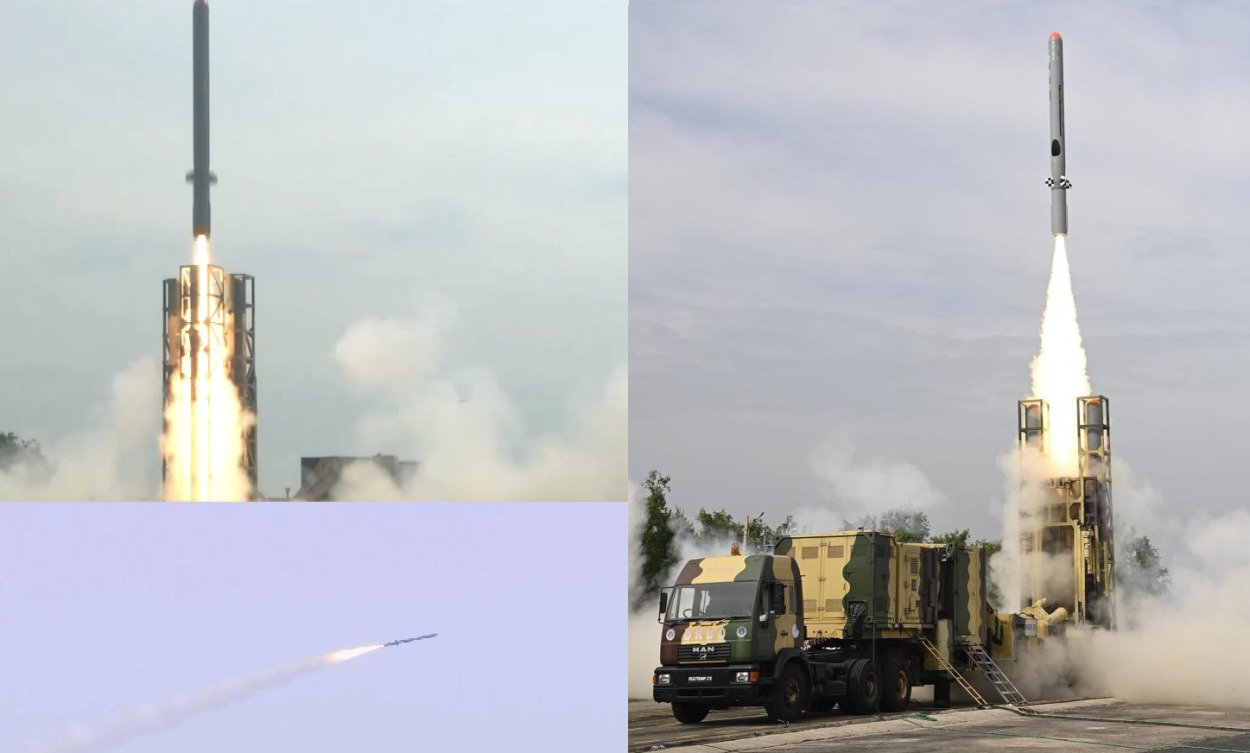The Defence Research and Development Organisation (DRDO) successfully conducted the maiden flight test of the Long Range Land Attack Cruise Missile (LRLACM) from the Integrated Test Range (ITR), Chandipur, off the coast of Odisha on November 12, 2024.
It wasn’t a routine success for the DRDO; it was a critical breakthrough. The LRLACM is not just another cruise missile. It’s one of a family of missiles under rapid development, which will substantially boost India’s conventional deterrence.
According to the Ministry of Defence (MoD) press release announcing the landmark test, all missile subsystems performed as expected and met the primary mission objectives during the test.
The missile followed the desired path using waypoint navigation and demonstrated its capability to perform various maneuvers while flying at various altitudes and speeds.
Development History
The LRLACM is being developed to meet QRs projected by the Indian Navy (IN) to the DRDO. Development of the missile was first announced during DefExpo 2020.
The DAC, on July 2, 2020, approved the acquisition of the missile by the Indian Navy and the Indian Air Force.
The LRLACM is based on the Indigenous Technology Cruise Missile (ITCM), which was developed under the Nirbhay project. Not surprisingly, development testing of the missile was possible relatively quickly.
Around 20 developmental flights are reportedly planned for the missile, which will mostly use indigenous systems and components, barring small sensors and RLGs (Ring Laser Gyros).
Once DRDO completes trials of the new missile, the Indian Navy is expected to place an order worth Rs 5,000 crore for 200 LRLACMs on Bharat Dynamics Limited (BDL), Hyderabad, and Bharat Electronics Limited (BEL), Bengaluru; the two Development-Cum-Production-Partners (DCPPs) for the missile.
The Aeronautical Development Establishment (ADE), Bengaluru, is developing the LRLACM, with contributions from other DRDO laboratories and Indian industries.

Missile Characteristics
The LRLACM has a range in excess of 1,000 km. It can follow a terrain-hugging flight profile to avoid radar detection, navigate waypoints, and change its flight profile to avoid adversary air defense zones, terrain, and other obstructions.
The missile is capable of precision attacks on static targets, using an RF seeker for terminal homing similar to the one developed for the Brahmos.
Launcher
The LRLACM is launched from the ground using a mobile articulated launcher and from frontline ships using a UVLM (Universal Vertical Launcher Module). Developed and patented by BrahMos Aerospace, the UVLM is already deployed on 30 Indian Navy ships.
Submarine Launched Cruise Missile (SLCM)
In addition to the LRLACM, in 2017, the MoD also sanctioned the development of a submarine-launched variant of the ITCM called the SLCM.
The SLCM, too, has a range of 1,000 km.
Brahmos Aerospace has already laid the groundwork for the undersea launch of a cruise missile from a submerged submarine as part of an earlier project to develop a submarine-launched variant of the Brahmos.
The first test of the submarine variant of the Brahmos was conducted on March 20, 2013, from a submerged platform in the Bay of Bengal, off the coast of Visakhapatnam.
According to the DRDO, “The missile took off vertically from the submerged platform for its full range of 290 kms. Following a pre-defined trajectory, the missile emerged from underwater, took a turn towards the designated target meeting all mission objectives.”
Subsequently, a pontoon, used earlier to test the K-15 Shaurya missile, was modified to test the Brahmos submarine variant. A ring was fitted in it to snugly fit the smaller diameter Brahmos.
In 2015, the submarine variant of the Brahmos reportedly underwent a successful trial from a submerged pontoon.
The development of the submarine-launched Brahmos variant was pursued as a platform-agnostic project. After the IN decided on the submarine platform, customized development for a specific platform was to be pursued.
It was initially contemplated that Project 75I submarines would have a land attack capability. However, the IN later dropped the QR (Qualitative Requirement).
Launch Platform
In May 2023, the ToI reported that the SLCM will be tested first on the Russian-origin Sindhughosh-class (Kilo-class) submarines.
Unverified press reports have suggested that a Kilo class variant with a VLS (Vertical Launch System) will be developed under Project 76. It’s likely that a UVLM capable of launching both the Brahmos and the SLCM will be fitted on the Kilo-class derivative.
In this context, in July 2018, Russian shipbuilder Zvezdochka and Indian shipbuilder Larsen and Toubro announced their partnership on an upgrade of the Kilo-class submarines.
It may be noted that Kilo-class submarines already have a land attack capability based on Kalibr 3M-14, with a range of up to 1,500–2,500 km. The missile can be launched from the 533 mm torpedo tubes of Kilo-class submarines.
The MTCR-compliant export variant of the Kalibr 3M-14 is referred to as Club-S. It features the 300 km-range 3M-14E missile, which can carry a high-explosive or fragmentation warhead.
Kilo-class submarines typically have six 533 mm torpedo tubes, four of which can be used to launch Kalibr or Club-S missiles.
The Need for VLS
It’s likely that the under-development SLCM would not be compatible with torpedo tube launch because of its size.
A VLS on the Kilo derivative would increase versatility by facilitating the launch of different long-range Indian cruise missiles—the more affordable subsonic SLCM and the more destructive but also expensive Brahmos.
Additionally, developing a VLS for submarines would eventually allow the IN to field nuclear-guided missile submarines (SSGNs).
Clearly, the successful test of LRLACM is the tip of an iceberg—a dangerous submerged deterrent looms underneath! Having mastered full-spectrum missile development, the DRDO is giving the Indian Armed Forces options that they could earlier only dream of.
- Vijainder K Thakur is a retired IAF Jaguar pilot, author, software architect, entrepreneur, and military analyst.
- VIEWS PERSONAL OF THE AUTHOR
- Follow the author @vkthakur




